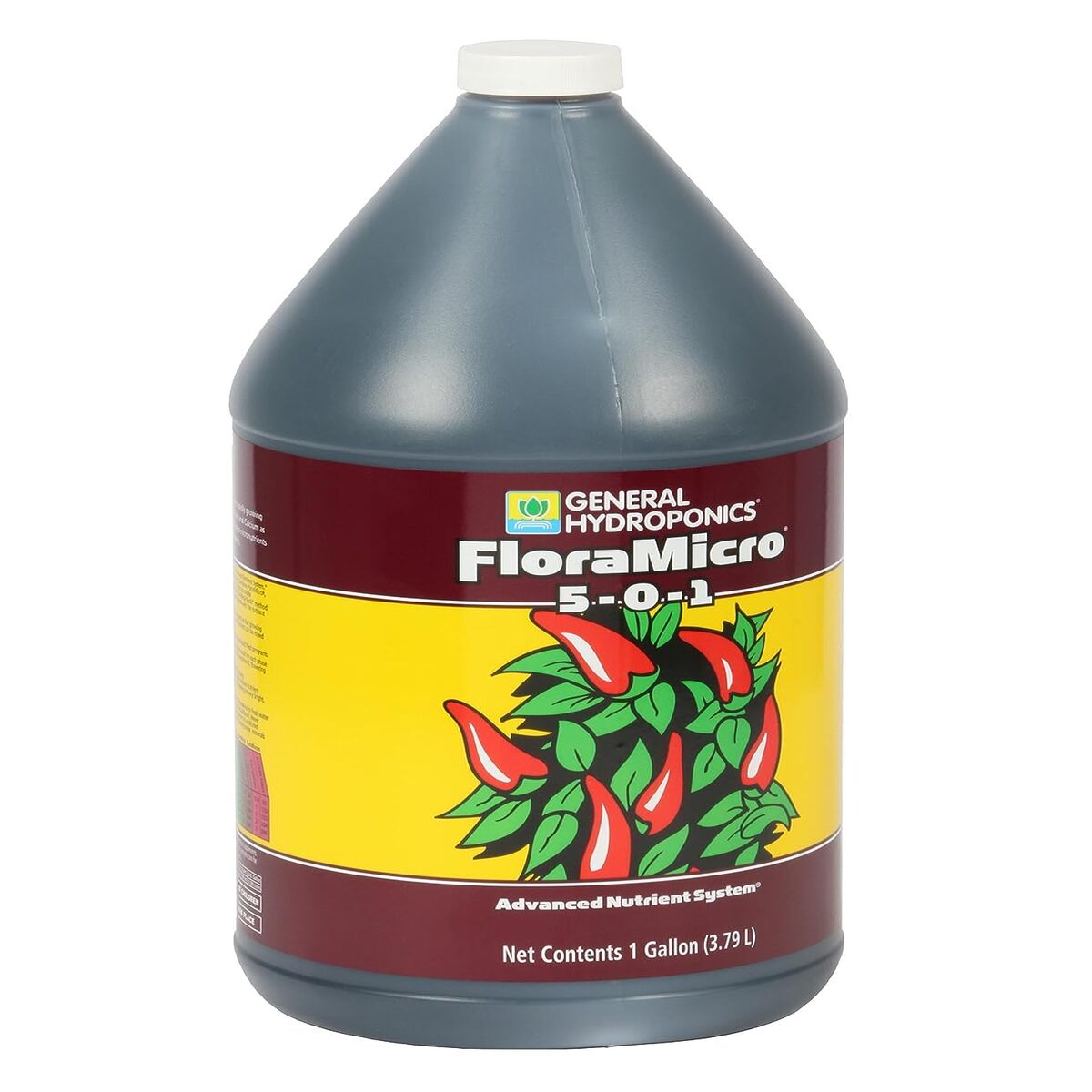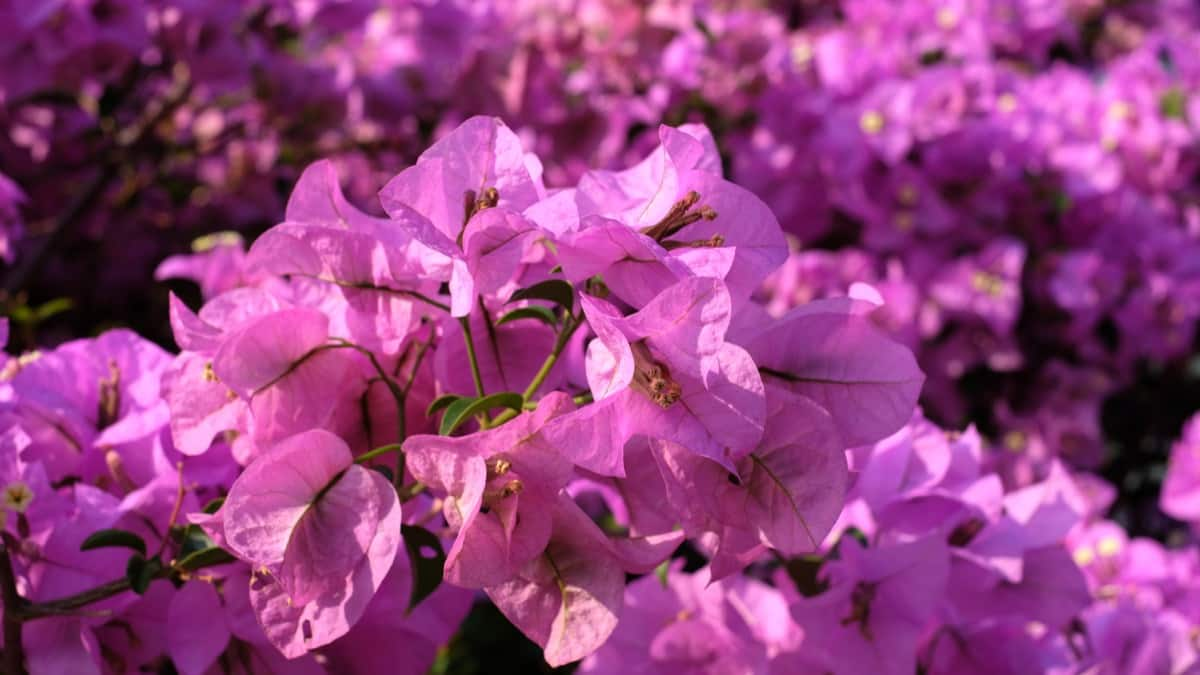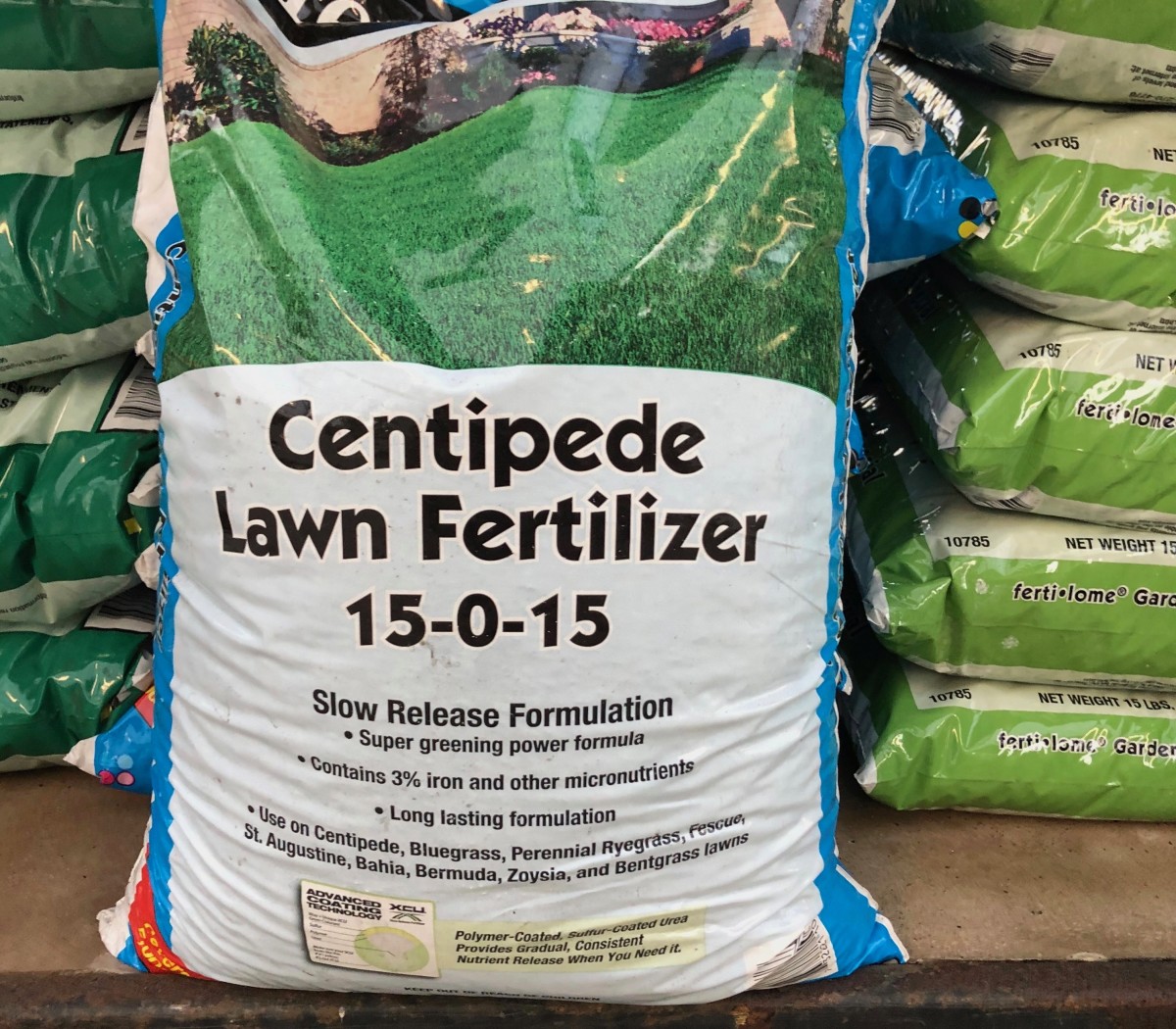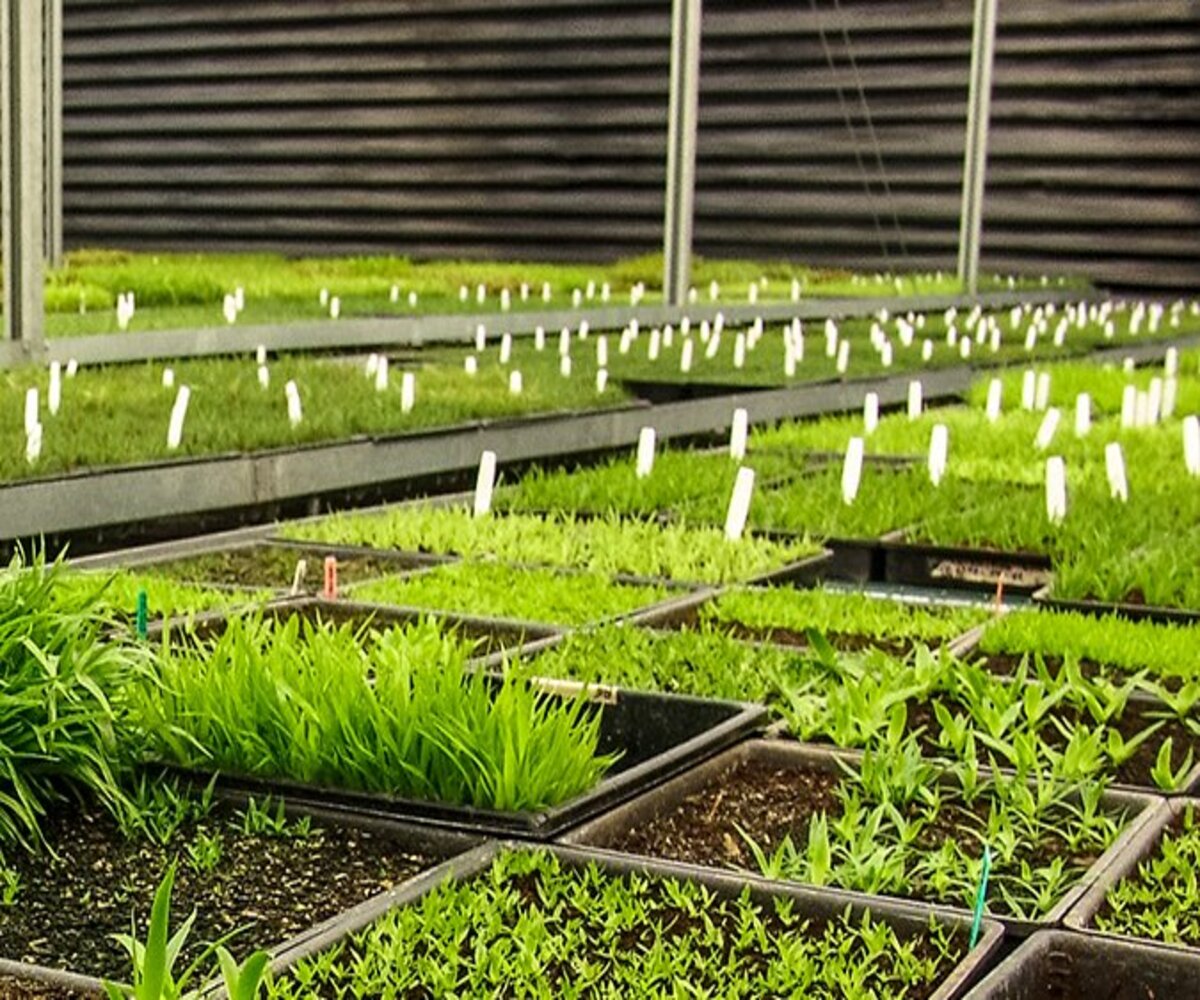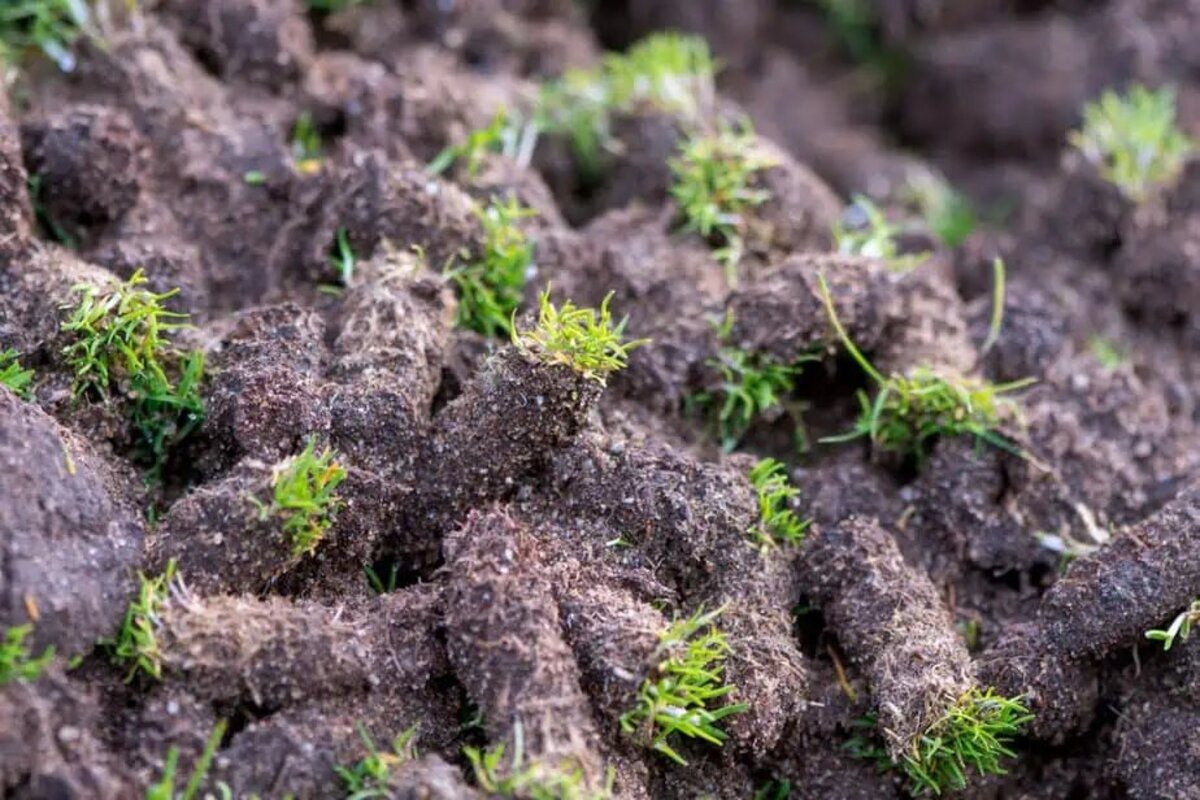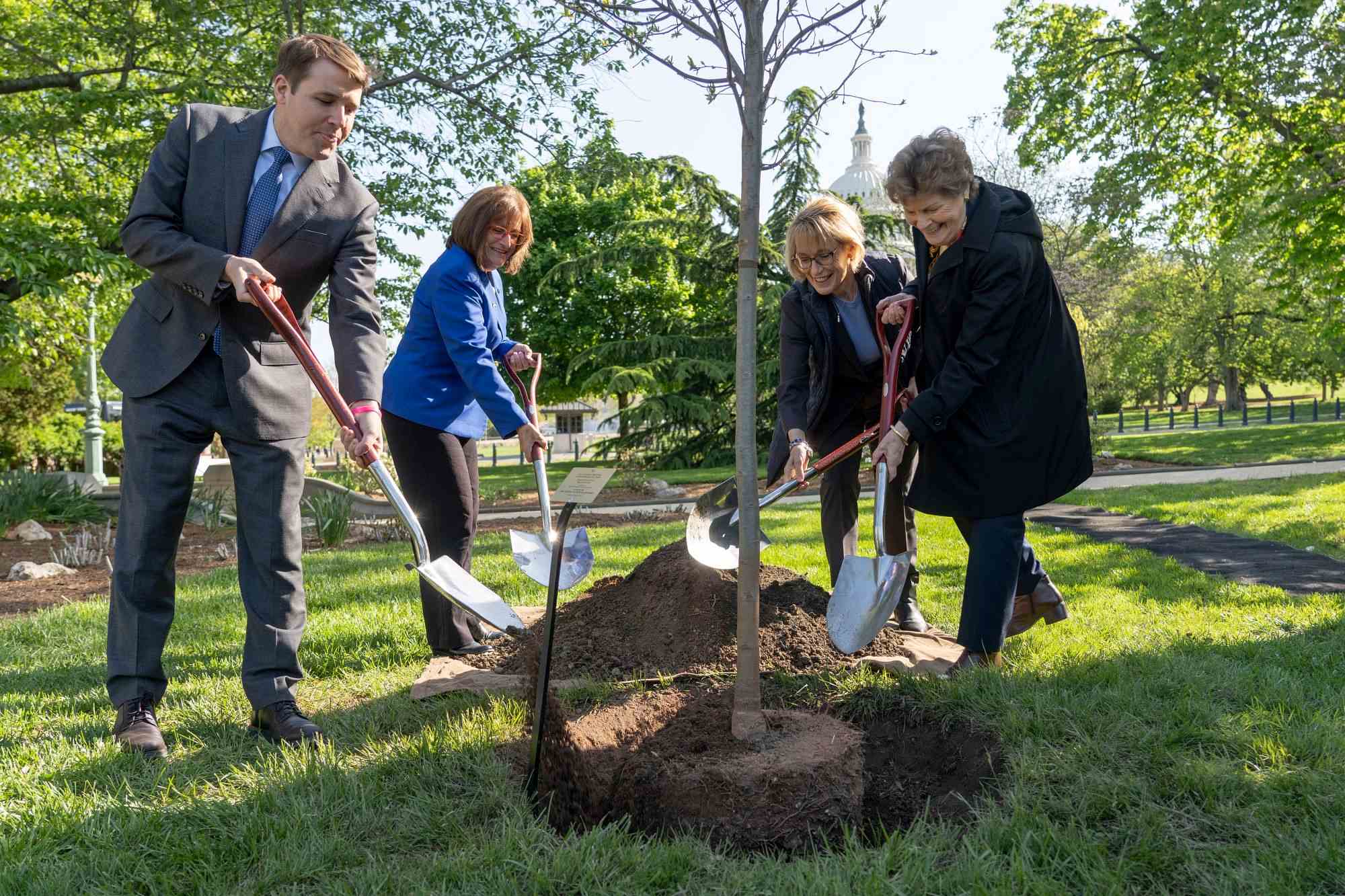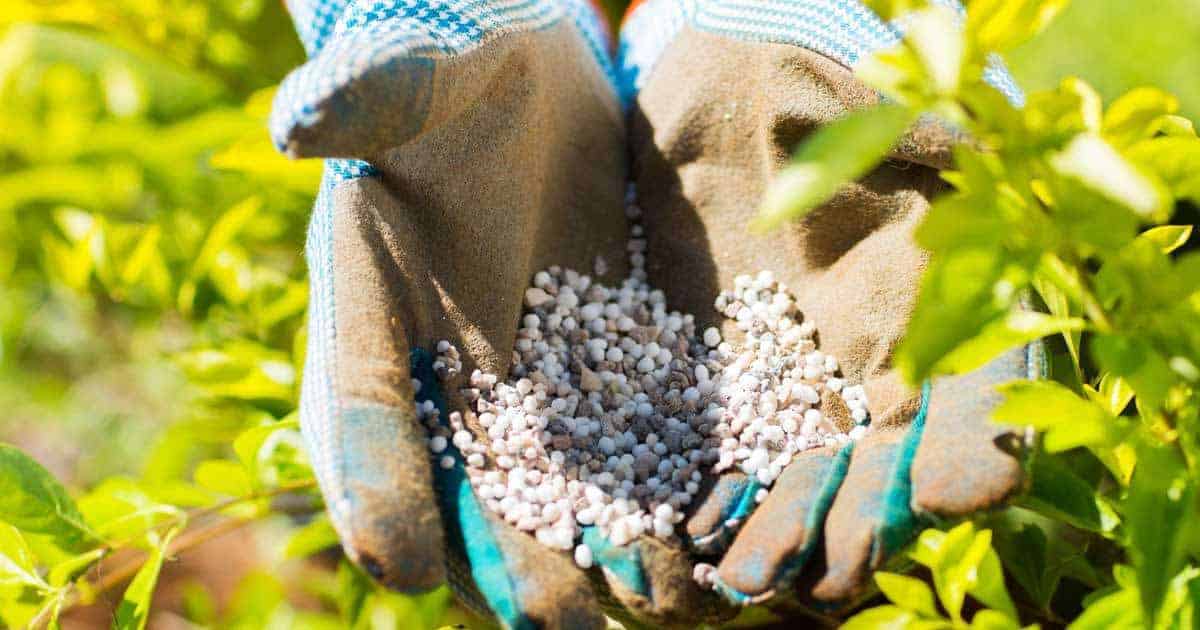Home>Gardening Tips and Tricks>What Fertilizer To Use On New Sod
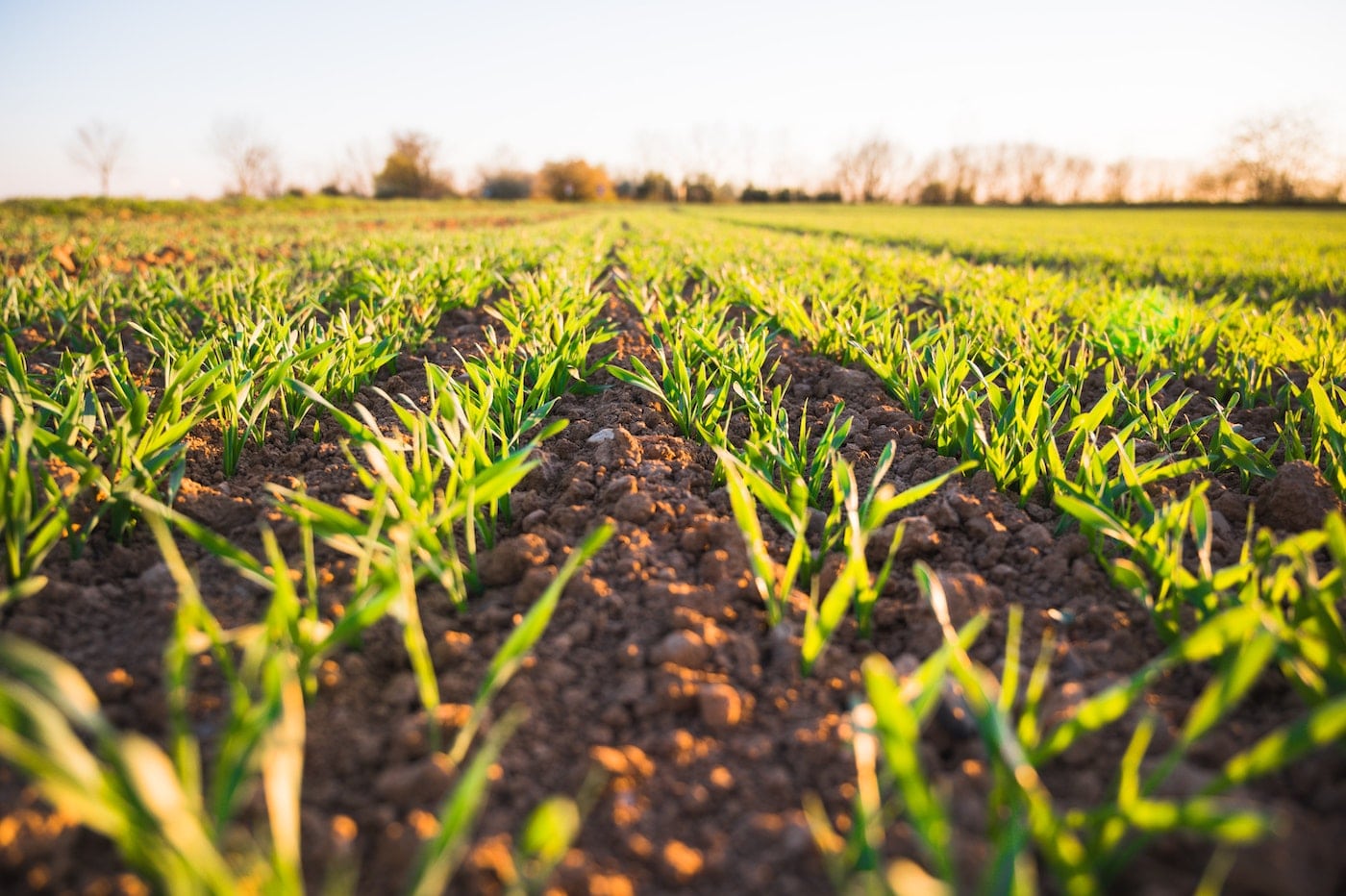

Gardening Tips and Tricks
What Fertilizer To Use On New Sod
Modified: January 22, 2024
Discover the best fertilizer to use on new sod for maximizing yield. Find expert tips and recommendations to ensure a healthy and vibrant lawn.
(Many of the links in this article redirect to a specific reviewed product. Your purchase of these products through affiliate links helps to generate commission for Chicagolandgardening.com, at no extra cost. Learn more)
Table of Contents
- Introduction
- Factors to Consider Before Choosing Fertilizer for New Sod
- Understanding the Nutritional Needs of New Sod
- Types of Fertilizers Suitable for New Sod
- Organic Fertilizers for New Sod
- Synthetic Fertilizers for New Sod
- Slow-release Fertilizers for New Sod
- Timing and Frequency of Fertilizer Application for New Sod
- Tips for Properly Applying Fertilizer on New Sod
- Conclusion
Introduction
When it comes to establishing a lush and healthy lawn, new sod can be a great option. However, to ensure its successful growth and longevity, it’s crucial to provide the right nutrients through proper fertilization. Choosing the correct fertilizer for new sod can significantly impact its overall health, root development, and overall appearance.
Before delving into the various types of fertilizers suitable for new sod, it’s important to understand the factors that should be considered. Factors such as soil type, climate, and specific sod variety can play a significant role in determining the appropriate fertilizer. By taking these factors into account, you can maximize the yield and maintain a thriving lawn.
Understanding the nutritional needs of new sod is essential for its overall health. Sod requires a balanced blend of essential nutrients, including nitrogen, phosphorus, and potassium (NPK). Nitrogen promotes lush foliage growth, phosphorous aids in establishing strong roots, and potassium enhances disease resistance and overall plant vigor. By providing the right balance of these nutrients, you can ensure that your new sod gets off to a strong start.
There are two main categories of fertilizers that can be used on new sod: organic and synthetic. Organic fertilizers are derived from natural sources and slowly release nutrients into the soil over time. Synthetic fertilizers, on the other hand, are manufactured and provide a quick-release of nutrients. Each type has its own benefits and considerations, and choosing the right one depends on factors such as personal preference, environmental impact, and specific lawn needs.
Slow-release fertilizers are another option that can be beneficial for new sod. As the name suggests, these fertilizers release nutrients gradually over an extended period, reducing the risk of burning or over-fertilizing the sod. Slow-release fertilizers provide a steady supply of nutrients to the grass, promoting even and consistent growth.
When it comes to applying fertilizer on new sod, timing and frequency are crucial. Applying fertilizer too early or too late can result in poor root establishment or excessive growth. Understanding the specific needs of your sod variety and considering the time of year can help determine the ideal timing for fertilizer application. Additionally, following a regular fertilization schedule throughout the growing season can help maintain the health and vitality of your new sod.
In this article, we will explore the different types of fertilizers suitable for new sod, discuss the benefits and considerations of each, and provide tips for proper application. By understanding the nutritional needs of your new sod and choosing the right fertilizer, you can maximize its yield and enjoy a vibrant and thriving lawn.
Factors to Consider Before Choosing Fertilizer for New Sod
Before selecting a fertilizer for your new sod, there are several important factors that should be taken into consideration. These factors can greatly influence the type and composition of fertilizer that will be most effective for your specific lawn. By carefully evaluating these factors, you can make an informed decision and maximize the success of your new sod.
1. Soil Type: Understanding the soil composition is crucial when choosing a fertilizer. Different soil types have varying levels of essential nutrients and pH levels. Conducting a soil test can provide valuable information about your soil’s fertility and acidity, allowing you to select a fertilizer that addresses any specific deficiencies.
2. Climate: The climate in which your new sod is being grown plays a significant role in determining the appropriate fertilizer. Factors such as temperature, rainfall, and humidity all affect how quickly nutrients are absorbed by the grass. Certain fertilizers may be better suited for specific climates, so it’s essential to consider your region’s weather patterns.
3. Sod Variety: Not all types of sod have the same nutritional requirements. Different sod varieties have varying needs in terms of nitrogen, phosphorus, and potassium levels. It’s important to research the specific nutritional needs of your sod variety to ensure you provide the right balance of nutrients for optimal growth.
4. Environmental Impact: Some fertilizers may have a more significant environmental impact than others. Consider using nutrient-rich organic fertilizers, which are derived from natural sources such as compost, manure, or seaweed extracts. These fertilizers not only nourish the soil but also contribute to long-term soil health and sustainability.
5. Personal Preference: Personal preference can also play a role when choosing a fertilizer for new sod. Some homeowners may prioritize organic options or prefer slow-release fertilizers for their convenience. It’s important to assess your own preferences and goals for your lawn to make a more informed decision.
By carefully considering these factors, you can select a fertilizer that meets the specific needs of your new sod. This will ensure that your lawn gets off to a healthy start and continues to thrive throughout the growing season.
Understanding the Nutritional Needs of New Sod
Properly understanding the nutritional needs of new sod is critical for establishing a healthy and vibrant lawn. Like any plant, sod requires a balanced supply of essential nutrients to support its growth and development. By providing these nutrients in the right quantities, you can maximize the yield and ensure the long-term health of your sod.
The three primary nutrients that are crucial for the growth of new sod are nitrogen, phosphorus, and potassium. These nutrients are often referred to as NPK and have specific roles in the development of healthy grass.
Nitrogen (N) is responsible for promoting lush green foliage. It plays a vital role in the photosynthesis process and helps grass blades to grow quickly and efficiently. A lack of nitrogen can result in pale and stunted growth.
Phosphorus (P) plays a critical role in root development and overall plant vigor. It aids in the establishment of a strong and healthy root system, enabling the sod to better absorb water and nutrients from the soil. Without sufficient phosphorus, the sod may have difficulty establishing itself and may show signs of weak growth.
Potassium (K) is important for overall plant health and disease resistance. It helps the sod develop sturdy cell walls, making it less susceptible to damage from pests, diseases, and environmental stressors. Potassium also plays a role in water regulation and nutrient uptake.
In addition to these primary nutrients, new sod may also benefit from secondary and micronutrients. These include calcium, magnesium, sulfur, iron, and zinc, among others. While they are required in smaller quantities, they are still essential for the optimal growth and health of the sod.
Understanding the specific nutritional needs of your new sod variety is important. Different varieties may have slightly different nutrient requirements. Researching and consulting with professionals or local extension services can help you determine the ideal nutrient balance for your specific type of sod.
It is important to apply fertilizers that contain these essential nutrients in the appropriate proportions. Overapplication or underapplication of these nutrients can have detrimental effects on the sod’s health and overall growth. Following recommended guidelines and instructions can help ensure that the nutritional needs of your new sod are met accurately.
By understanding the nutritional needs of your new sod and providing the right combination of nutrients, you can set the stage for a healthy and vibrant lawn that will flourish for years to come.
Types of Fertilizers Suitable for New Sod
When it comes to choosing the right fertilizer for new sod, there are various types available, each with its own benefits and considerations. Understanding these different types can help you make an informed decision and provide the best nourishment for your sod. Here are the common types of fertilizers suitable for new sod:
1. Organic Fertilizers: Organic fertilizers are derived from natural sources such as compost, manure, or seaweed extracts. They are rich in organic matter and provide a slow-release of nutrients, feeding the soil over an extended period. Organic fertilizers improve soil health and fertility, promote microbial activity, and enhance water retention. They are environmentally friendly, as they reduce the risk of chemical runoff and foster sustainable gardening practices. However, they may require multiple applications and additional time for the nutrients to become available to the sod.
2. Synthetic Fertilizers: Synthetic or inorganic fertilizers are manufactured using chemical compounds and provide a quick-release of nutrients. They typically contain a precise balance of NPK and other essential elements. Synthetic fertilizers are readily available, easy to apply, and provide immediate results. However, they may leach into groundwater and have a higher risk of burning the sod if applied incorrectly. It’s essential to follow the instructions carefully and avoid over-application.
3. Slow-release Fertilizers: Slow-release fertilizers are designed to gradually release nutrients over a specified period. These fertilizers provide a steady supply of nutrients to the sod, promoting even growth without the risk of burning. Slow-release fertilizers are available in both organic and synthetic options. They are more convenient to use as they require fewer applications throughout the growing season. However, they may be more expensive compared to other fertilizer types.
4. Liquid Fertilizers: Liquid fertilizers are applied as liquid solutions and are quickly absorbed by the sod. They can be sprayed directly onto the grass or mixed with water for irrigation. Liquid fertilizers allow for precise application and are easily absorbed by the sod’s root system. They provide a quick boost of nutrients but may require more frequent applications compared to other types of fertilizers.
5. Granular Fertilizers: Granular fertilizers come in solid form, usually small granules that are spread evenly over the lawn. They are easy to apply and provide a consistent release of nutrients. Granular fertilizers are available in both quick-release and slow-release options. They provide convenience and allow for even coverage but may require additional watering to activate and distribute the nutrients.
When choosing the right fertilizer for your new sod, consider factors such as personal preference, environmental impact, ease of application, and specific lawn needs. It’s also important to follow the manufacturer’s recommendations and consider any specific fertilization guidelines for your sod variety. By selecting the appropriate fertilizer type, you can ensure that your new lawn receives the necessary nutrients for healthy growth and establishment.
Organic Fertilizers for New Sod
Organic fertilizers are an excellent choice for those looking for a natural and sustainable option to nourish their new sod. These fertilizers are derived from organic materials such as compost, manure, bone meal, fish emulsion, and seaweed extracts. They provide a range of benefits for both the soil and the sod itself.
One of the key advantages of organic fertilizers is their slow-release nature. The nutrients in organic fertilizers are broken down gradually by soil organisms, resulting in a steady and sustained supply of nutrients to the sod. This slow-release allows for a more even growth and reduced risk of nutrient leaching. Additionally, organic fertilizers improve soil structure, enhance water retention, and increase soil fertility over time.
Compost is a popular organic fertilizer for new sod. It is made from decomposed organic matter and is rich in essential nutrients. Compost helps improve soil structure, adds organic matter to the soil, promotes beneficial microbial activity, and enhances nutrient availability for the sod. When applied to new sod, compost can aid in root development, increase drought tolerance, and provide a rich source of organic matter for microorganisms that benefit the overall health of the sod.
Manure is another organic fertilizer commonly used on new sod. It contains a balanced mix of nutrients and organic matter. Chicken, cow, and horse manure are all popular options. Manure not only provides essential nutrients but also improves soil structure and water-holding capacity. It can be applied before or after laying the sod, and it helps nourish the newly established sod and encourages robust root growth.
Fish emulsion and seaweed extracts are organic fertilizers that are rich in nutrients and minerals. They can be applied as foliar sprays or added to the soil. These fertilizers provide a quick boost of nutrients to the sod and can enhance its overall health and vigor. They are particularly beneficial in promoting strong root growth and improving the sod’s ability to withstand stressors such as drought and disease.
When using organic fertilizers on new sod, it is essential to follow the recommended application rates and guidelines. Unlike synthetic fertilizers, organic fertilizers may require a higher volume of material to achieve the same nutrient concentration. Regular applications throughout the growing season may also be necessary to maintain a consistent supply of nutrients.
Organic fertilizers are an environmentally friendly option, as they reduce the risk of chemical runoff and promote sustainable gardening practices. They contribute to the long-term health and fertility of the soil, benefiting not just the sod but also future plantings in the area.
By choosing organic fertilizers for your new sod, you can provide a natural and balanced supply of nutrients while promoting soil health and sustainability.
Synthetic Fertilizers for New Sod
Synthetic fertilizers, also known as inorganic or chemical fertilizers, are a popular choice for many homeowners when it comes to fertilizing new sod. These fertilizers are manufactured using chemical compounds and provide a quick-release of nutrients to the sod. They offer several benefits and considerations that make them suitable for new sod applications.
One of the key advantages of synthetic fertilizers is their immediate impact on the sod. They are formulated with precise ratios of nitrogen (N), phosphorus (P), and potassium (K), as well as other essential micronutrients. This ensures that the sod receives a concentrated and well-balanced supply of nutrients for optimal growth and development.
Synthetic fertilizers are readily available in garden centers and provide a convenient and easy-to-use option for homeowners. They come in various formulations, such as granular or liquid, allowing for flexibility in application methods. Granular fertilizers can be spread evenly over the lawn, while liquid fertilizers can be applied as a foliar spray or mixed with water for irrigation.
Another advantage of synthetic fertilizers is their versatility. They can be tailored to meet the specific nutritional requirements of different sod varieties. By selecting a fertilizer with the appropriate NPK ratio and micronutrient content, you can ensure that your new sod receives the precise nutrients it needs for healthy growth and establishment.
Synthetic fertilizers are typically formulated as quick-release fertilizers, meaning that they provide an immediate boost of nutrients to the sod. This can lead to fast and vigorous growth, promoting a lush and green lawn. However, it is important to follow the recommended application rates to avoid over-fertilization, which can cause damage and stress to the sod.
When using synthetic fertilizers on new sod, it is crucial to follow the manufacturer’s instructions for application. Applying the fertilizer evenly and at the correct time of day and weather conditions will ensure optimal absorption by the sod’s roots. It is also important to avoid applying synthetic fertilizers when heavy rainfall is expected, as this can lead to nutrient runoff and environmental pollution.
While synthetic fertilizers offer numerous benefits, it is also essential to be cognizant of their potential drawbacks. Overreliance on synthetic fertilizers can lead to nutrient imbalances, the acidification of the soil, and reduced soil fertility in the long run. To mitigate these effects, consider combining synthetic fertilizers with organic amendments or implementing sustainable gardening practices.
In summary, synthetic fertilizers for new sod provide immediate and precise nutrient delivery to promote vigorous growth and establishment. They offer convenience and versatility, allowing for tailored nutrition for different sod varieties. However, it is important to use them responsibly and in conjunction with sustainable gardening practices to maintain long-term soil health and environmental sustainability.
Slow-release Fertilizers for New Sod
When it comes to fertilizing new sod, slow-release fertilizers are a popular choice among homeowners and professionals alike. These fertilizers are designed to gradually release nutrients to the sod over an extended period. They offer several benefits that make them suitable for promoting healthy growth and long-term maintenance of new sod.
The main advantage of slow-release fertilizers is their controlled and steady release of nutrients. Unlike quick-release fertilizers, which provide an immediate nutrient boost, slow-release fertilizers break down slowly over time, ensuring a sustained supply of nutrients to the sod. This gradual release helps to prevent nutrient leaching and reduces the risk of burning the sod.
Slow-release fertilizers are available in both organic and synthetic forms. Organic slow-release fertilizers are typically made from natural sources such as composted manure, bone meal, or feather meal. Synthetic slow-release fertilizers are formulated with coated granules or are made using a urea-formaldehyde compound.
One of the key benefits of slow-release fertilizers is that they require fewer applications compared to other types of fertilizers. They can provide nutrients to the sod for several weeks or even months, depending on the specific formulation. This reduces the need for frequent reapplication and makes slow-release fertilizers more convenient for homeowners who may have limited time or resources for lawn care.
Slow-release fertilizers not only assist in providing a continuous supply of nutrients to the sod, but they also promote a more even and consistent growth. Since the release of nutrients is gradual, the grass receives a steady source of nourishment, resulting in a more robust root system and balanced foliage development. This helps to establish a healthier, thicker, and more resilient sod.
Another advantage of slow-release fertilizers is their environmental friendliness. The controlled release of nutrients reduces the risk of excess nutrients leaching into groundwater or contributing to water pollution. This makes slow-release fertilizers a more sustainable option for promoting healthy growth while minimizing negative impacts on water quality and the environment.
When using slow-release fertilizers on new sod, it’s important to follow the manufacturer’s instructions for application rates and timing. Applying the fertilizer evenly and at the recommended intervals ensures that the sod receives a consistent supply of nutrients. Additionally, it’s important to consider the specific nutritional needs of the sod variety and adjust the fertilization schedule accordingly.
In summary, slow-release fertilizers are a beneficial option for new sod as they provide a steady and controlled release of nutrients, reducing the risk of nutrient leaching and burning. They require fewer applications, promote even growth, and are environmentally friendly. By choosing slow-release fertilizers, you can help establish and maintain a healthy and vibrant lawn that will thrive over the long term.
Timing and Frequency of Fertilizer Application for New Sod
The timing and frequency of fertilizer application are crucial factors to consider when establishing and maintaining new sod. Properly timing the application and maintaining a regular fertilization schedule can greatly impact the health, growth, and overall success of your lawn. Here are some important considerations regarding the timing and frequency of fertilizer application for new sod:
1. Pre-Installation Fertilization: Before installing new sod, it’s generally recommended to apply a slow-release starter fertilizer. This type of fertilizer provides essential nutrients to help the sod establish roots and overcome the stress of transplanting. Pre-installation fertilization should be done a few days before laying the sod to give the nutrients time to integrate into the soil.
2. Initial Fertilization: After laying the sod, it’s important to provide an initial application of fertilizer to support root growth and overall establishment. This can be done approximately 4 to 6 weeks after installation, or when the sod starts to show signs of active growth. Use a balanced fertilizer with a higher percentage of nitrogen to promote faster growth and development.
3. Regular Fertilization Schedule: Once the initial application has been made, it’s important to establish a regular fertilization schedule throughout the growing season. This schedule will depend on various factors, including the type of sod, climate, and soil conditions. In general, aim for fertilizer applications every 6 to 8 weeks during the active growing season.
4. Seasonal Adjustments: Adjusting the fertilizer application schedule based on the seasons is important for new sod. For warm-season grass varieties, such as Bermuda grass or Zoysia grass, start fertilizing in late spring or early summer when the soil temperature reaches around 55 to 60°F (13 to 15°C). For cool-season grasses like Kentucky Bluegrass or Tall Fescue, fertilize in early fall and again in late fall or early spring.
5. Avoid Fertilizing Dormant Sod: During periods of dormancy for warm-season grasses or winter dormancy for cool-season grasses, it’s best to avoid fertilizing the sod. Applying fertilizer during these periods when the grass is not actively growing can lead to nutrient runoff or an unnecessary use of resources.
6. Watering after Fertilization: It’s important to water the sod immediately after fertilization to ensure proper nutrient absorption and minimize any potential risk of burning. Watering helps distribute the fertilizer evenly and allows the nutrients to penetrate the soil, reaching the root zone of the sod.
Remember to always read and follow the instructions provided by the manufacturer when applying fertilizers to your new sod. Bear in mind that excessive fertilization can result in nutrient imbalance, weak growth, and potential damage to the grass. By timing the fertilizer applications appropriately and adhering to a consistent fertilization schedule, you can provide your new sod with the necessary nutrients it needs to grow and thrive throughout the seasons.
Tips for Properly Applying Fertilizer on New Sod
Applying fertilizer correctly is crucial to maximize the effectiveness and benefits for your new sod. Here are some important tips to ensure proper application of fertilizer on your lawn:
1. Read and Follow Instructions: Always read the label and instructions provided by the fertilizer manufacturer. Pay attention to the recommended application rates, timing, and any specific instructions for your type of sod.
2. Use the Right Spreader: Choose the appropriate spreader for the type of fertilizer you are using. Broadcast spreaders are ideal for large areas, while drop spreaders provide more precise application for smaller or irregularly shaped sections.
3. Calibrate the Spreader: Before applying the fertilizer, calibrate your spreader to ensure the correct application rate. Follow the manufacturer’s guidelines to avoid under- or over-application, as this can lead to uneven growth or damage to the sod.
4. Apply Evenly: Ensure even distribution of fertilizer by walking at a steady pace while operating the spreader. Overlapping the application paths can help prevent missed areas or patchy growth. Pay extra attention to edges and corners to avoid uneven coverage.
5. Water After Application: Water the sod immediately after applying fertilizer. This helps dissolve and activate the fertilizer, allowing the nutrients to penetrate the soil and reach the roots of the sod. Watering also minimizes the risk of burning and aids in nutrient absorption.
6. Avoid Fertilizer Runoff: Prevent fertilizer runoff by avoiding application on steep slopes or during heavy rainfall. If applying near water bodies, ensure there is a buffer zone to prevent nutrient runoff into aquatic ecosystems.
7. Time the Application: Apply fertilizer during the early morning or late afternoon when the weather is cooler. This allows the grass blades to dry quickly, reducing the risk of burning and maximizing nutrient absorption.
8. Practice Environmental Stewardship: Consider using slow-release or organic fertilizers to minimize environmental impact. These types of fertilizers release nutrients gradually and reduce the risk of nutrient leaching or runoff.
9. Monitor Lawn Health: Regularly monitor the health of your new sod after fertilization. Look for signs of over-fertilization, such as excessive growth, discoloration, or wilting. Adjust the fertilizer application rate or seek professional advice if necessary.
10. Maintain Regular Fertilization: Establish a regular fertilization schedule throughout the growing season to provide consistent nutrient supply to the sod. This helps promote healthy growth, root development, and overall vitality.
By following these tips, you can ensure proper application of fertilizer and promote optimal growth and health for your new sod. Taking care to apply fertilizer correctly will help maximize its effectiveness and provide a beautiful and thriving lawn.
Conclusion
Fertilizing new sod is a critical step in establishing a healthy and vibrant lawn. By considering factors like soil type, climate, sod variety, and personal preferences, you can choose the appropriate fertilizer that meets the specific needs of your new sod. Understanding the nutritional requirements of the sod, including the essential NPK nutrients, allows you to provide the right nutrients to promote growth and development.
There are different types of fertilizers suitable for new sod, including organic and synthetic options. Organic fertilizers provide slow-release of nutrients, improve soil health, and contribute to long-term sustainability. On the other hand, synthetic fertilizers offer immediate results and precise nutrient delivery. Slow-release fertilizers gradually release nutrients, ensuring steady growth and minimizing the risk of nutrient leaching.
The timing and frequency of fertilizer application for new sod are also crucial. Pre-installation fertilization, initial fertilization, and regular fertilization throughout the growing season help in establishing and maintaining the health of the sod. Adjusting the fertilization schedule based on the sod variety, climate, and seasonal changes is essential for optimal results.
Proper application techniques, including reading and following instructions, using the right spreader, applying evenly, watering after application, and practicing environmental stewardship, ensure that the fertilizer is applied correctly and minimizes potential risks.
In conclusion, selecting the right fertilizer and implementing a well-planned fertilization schedule can maximize the health and growth of your new sod. By understanding the nutritional needs of the sod, considering the different types of fertilizers available, and following proper application techniques, you can create a lush and thriving lawn that enhances the beauty and enjoyment of your outdoor space for years to come.
